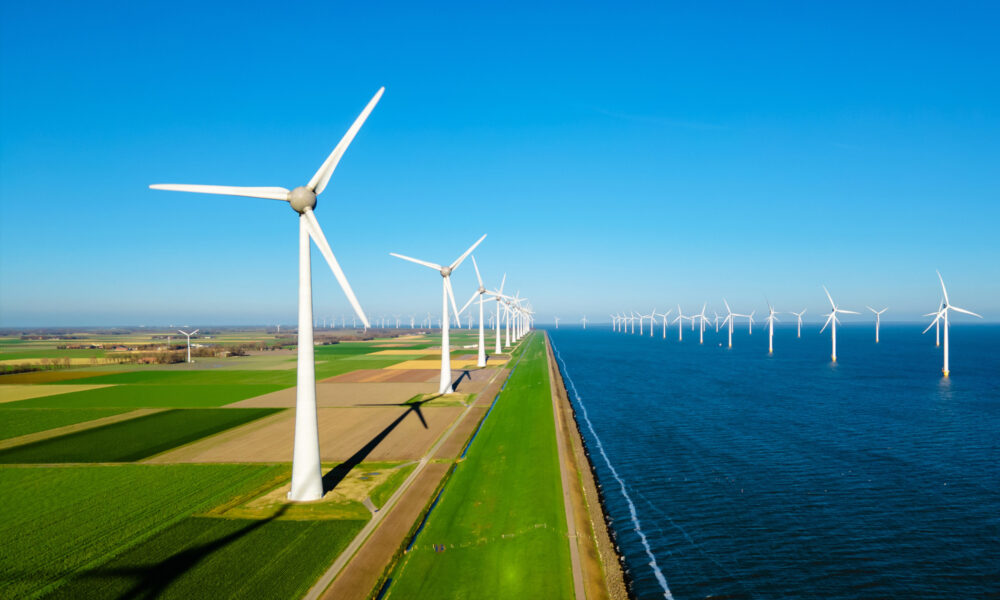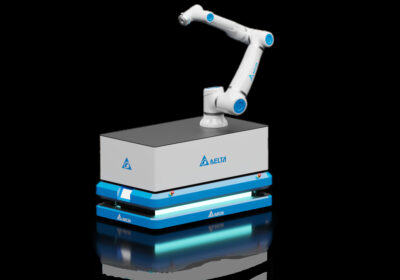There’s an old Chinese proverb that says “when the winds of change blow, some build walls, others build windmills.” In a modern and evolving energy industry, those who build windmills are leading the green transition. Here, Stefan Hufnagl, Industry Specialist Energy at automation supplier COPA-DATA, discusses the growing importance of wind power and the necessary factors to drive its success.
Global energy trends show that we are making huge strides in harnessing these winds of change. Wind power has become a fundamental pillar of the world’s energy mix, generating over 2,300 terawatt hours (TWh) of electricity each year as of 2023, or around 10 per cent of the world’s total supply.
But meeting soaring global energy demand and supporting ambitious climate targets will call for more than turbines alone. Building on the rapid uptake of wind power will require a broad, multifaceted approach that brings together effective policy and smart technology. From predictive maintenance to centralized control platforms, digital innovation will drive wind energy’s next chapter.
Over 40 countries are actively investing in wind, with China, the UK and Germany leading the charge. Onshore wind farms still account for most of this capacity. This segment is worth $130 billion as of 2023 and could be on track to hit a staggering $200 billion by 2030 if growth continues at its current rate.
That said, offshore wind is gaining momentum fast. The surge of offshore wind projects is also partly due to declining availability of suitable land for onshore projects, but also because new innovations are making it easier and more cost effective to capture wind out at sea. What’s more, turbines are growing in both size and capacity, with newer units exceeding 1 MW, and floating wind platforms are now more easily deployable, harvesting energy in previously inaccessible areas.
In fact, the offshore wind sector, with a current value of $40 billion, is projected to triple to over $100 billion in the same 2023 to 2030 period. Achieving growth at this scale will depend heavily on both policy support and integration of smart digital solutions.
The power of policy
Continuing this impressive upward trajectory of wind power will require backing from government policies and international agreements. Incentivizing green energy through government-established objectives, tax credits and financial subsidies is necessary to encourage the development of further projects. Several nations already offer feed-in tariffs (FiTs) and power purchase agreements (PPAs) to guarantee that wind energy providers are paid fairly for the energy they produce.
Effective legislation should create a supportive environment and reduce risks for investment, innovation and market expansion in the wind energy sector. Policies that fund R&D will pave the way for next-generation tech and infrastructure. But legislation alone can’t ensure success — it must be combined with intelligent software systems.
As regulations vary globally, operators need tools that can adapt to different policy environments. Software platforms must enable rapid configuration and integrate with reporting obligations, approval processes, and regional grid codes. Success depends on simple, configurable functions and customizable interfaces, empowering energy companies to align with local regulation without slowing operations.
Infrastructure meets innovation
Expanding wind power capacity poses unique technical challenges, from the natural volatility of renewable resources to the difficulty of integrating modern digital solutions with legacy infrastructure. Staying competitive in the sector requires more than installing turbines; it depends on strategic use of intelligent, interoperable technologies.
To get the most out of wind power projects, digital infrastructure should be viewed as an essential component of scalability, efficiency and resilience across the whole life cycle of a wind project rather than simply a helpful supporting feature. As fleets expand, especially offshore, operators face increasing technological heterogeneity. Assets from multiple OEMs come with different software interfaces, data standards and maintenance protocols, making streamlined operations fragmented, more complex and costly.
Platforms like COPA-DATA’s zenon address this by providing a unified, vendor-agnostic control environment. They integrate assets across hardware types, operational domains and generations, enabling centralized monitoring, automation and data analysis — creating the interconnectedness needed for scalable and profitable operations.
Wind farms also rely on seamless coordination between complex systems: turbines, substations, monitoring systems and grids. Without unification, data silos and disjointed systems limit performance. Smart platforms harmonize data across these systems, improving situational awareness and ensuring compliance with changing regulations.
These platforms are built to handle vast volumes of operational data from distributed assets. zenon, for instance, enables centralized control and monitoring for visibility across multiple sites, turning complex data into actionable insights to keep operations smooth and predictable.

Predictive power
The shift towards predictive maintenance strategies further highlights how fundamental intelligent software systems are becoming across the energy sector. By using sensors, predictive analytics and automated event logging, operators can move from reactive troubleshooting to intuitive, proactive asset management.
This allows for the detection of early signs of equipment stress, preventing costly downtime. In an industry where asset availability directly impacts profitability, this protects energy output and lowers the long-term lifecycle costs, turning maintenance excellence into a competitive advantage.
Predictive maintenance is just one example of how data transforms wind operations. By analyzing long-term production trends alongside environmental conditions, operators can identify underperformance or degradation, schedule inspection windows and maintain high availability — all of which are essential for profitability and regulatory compliance.
Adaptive control systems also play a role in managing the intermittency of wind which often results in energy spikes or uneven loads. These systems adjust turbine output in real time, balancing power production with grid demands and protecting equipment from overstrain.
As wind encompasses a larger share of the grid, these systems are vital for stability. Future-proof automation must balance technical, commercial, and regulatory needs. With platforms like zenon, operators can bridge the gap between plant performance and grid integration. Together, these technologies create an agile, connected operation able to stay ahead in a fast-growing industry.
Looking ahead
Wind energy is a huge success story in the renewable revolution, but the journey doesn’t stop here. Meeting both future energy needs and climate targets will require not only more turbines, but smarter, more connected systems.
The future of wind will rely on sustained investment in infrastructure, innovation and digital tools. With effective policy, advanced technology and global collaboration, we can keep building windmills to harness the winds of change for a cleaner, more secure future.
Clean, connected wind operations with zenon.








